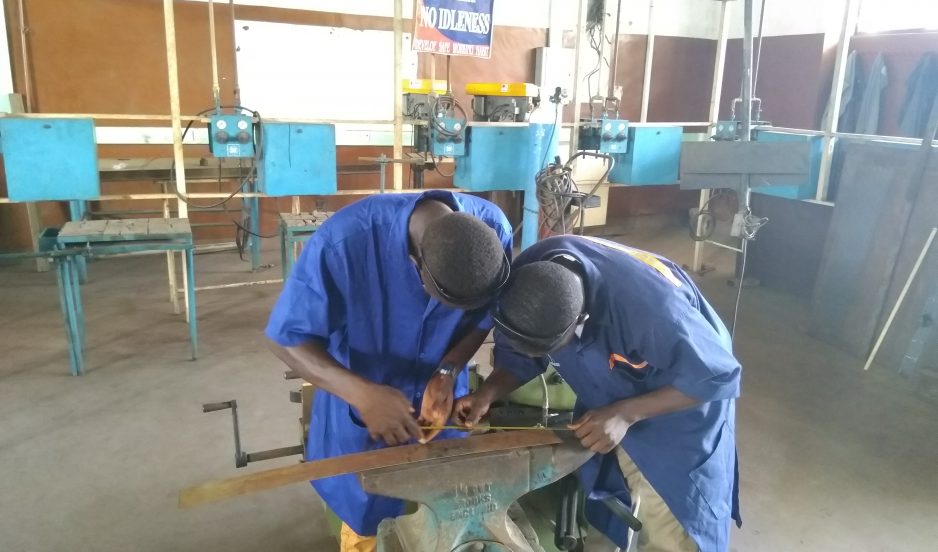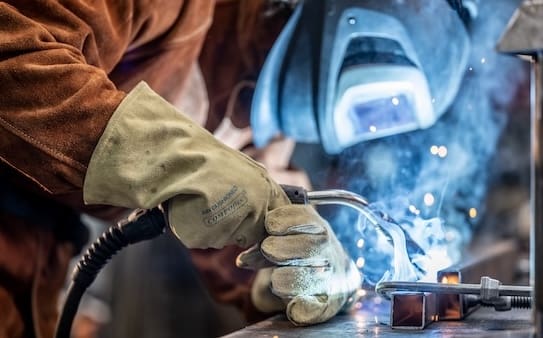Typical Welding Repair Service Issues and How to Address Them Efficiently
Welding repairs often experience a variety of issues that can endanger the honesty of the last product. Common issues include poor penetration, porosity, and misalignment, to name a few. Each issue offers unique difficulties that need details approaches for resolution. Understanding these issues is crucial for welders aiming to improve their abilities and outcomes. This conversation will certainly discover these typical welding repair service issues and reliable approaches to resolve them.
Inadequate Penetration
Inadequate infiltration takes place when the weld metal fails to totally fuse with the base material, resulting in weak joints and possible architectural failures. This issue often originates from not enough warm input, wrong electrode angle, or inappropriate welding speed. Welders may come across inadequate infiltration as a result of a miscalculation of the needed specifications for a certain material density or type. In addition, contamination on the base material's surface can impede effective bonding, worsening the problem. To deal with insufficient infiltration, welders should assure suitable settings on their equipment and preserve a tidy work surface area. Normal evaluation of welds is advised to determine any shortages early, enabling for timely corrections and the prevention of compromised structural honesty in welded settings up.
Porosity
Porosity is an usual defect in welded joints that manifests as little gas bubbles entraped within the weld steel. This flaw can jeopardize the honesty of the weld, causing lowered strength and potential failure under stress and anxiety. Belgrade Fabrication. Porosity generally occurs from contamination, moisture, or incorrect welding strategies, which allow gases to leave into the molten weld swimming pool. To deal with porosity, welders must guarantee appropriate surface prep work, maintain a clean workplace, and use appropriate welding specifications. Furthermore, selecting the appropriate filler product and shielding gas can alleviate gas entrapment. Routine inspection and testing of welds can help recognize porosity early, ensuring timely corrective activities are taken, thereby preserving the quality and reliability of the welded framework
Imbalance
Imbalance in welding can develop from numerous aspects, including incorrect setup and thermal growth. Comprehending the origin triggers is crucial for effective resolution. A number of improvement strategies are offered to realign parts and guarantee structural stability.
Reasons for Imbalance
Welding imbalance commonly stems from a selection of underlying issues that can endanger structural honesty. One main cause is improper fit-up of components before welding, which can cause voids and irregular surface areas. Variations in thermal expansion throughout the welding procedure can likewise lead to distortion, especially if the materials being signed up with have different coefficients of expansion. Additionally, poor clamping and fixturing might stop working to hold components firmly in position, bring about activity during welding. Improperly maintained devices, including welding machines and devices, may introduce disparities in the weld grain, further contributing to imbalance. Ultimately, operator mistake, stemming from not enough training or experience, can additionally play a significant role in developing misaligned welds.
Modification Techniques Readily Available
Addressing misalignment successfully calls for a mix of corrective strategies customized to the particular concerns at hand. One typical technique is using jigs or fixtures to hold elements in the right setting during welding, ensuring consistent alignment. In addition, preheating the products can help in reducing distortion and boost fit-up. For considerable misalignment, mechanical adjustment methods, such as utilizing hydraulic jacks or clamps, can be used to remedy the setting prior to welding. Post-weld heat therapy might also be necessary to ease anxieties brought on by misalignment. Careful assessment and adjustment during the arrangement phase can protect against imbalance concerns from ending up being significant issues, promoting a smoother welding process and improving total structural integrity.
Distortion
Distortion is a common challenge in welding that can arise from numerous elements, including irregular heating & cooling. Recognizing the sources of distortion is necessary for executing effective prevention techniques. Resolving this problem not just boosts structural integrity but likewise improves the general quality of the weld.
Reasons for Distortion
When based on the intense warmth of welding, products usually undertake modifications that can lead to distortion. This sensation mostly emerges from thermal expansion and tightening during the welding procedure. As the weld area warms up, the material increases; upon air conditioning, it acquires, which can create internal anxieties. Additionally, uneven home heating across a workpiece can intensify these anxieties, resulting in warping or bending. The sort of product additionally plays a significant function; metals click here for more info with varying thermal conductivity and coefficients of expansion may react in a different way, bring about uncertain distortions. Poor joint layout and insufficient fixturing can add to imbalance throughout welding, boosting the chance of distortion. Comprehending these reasons is necessary for reliable welding repair and avoidance methods.
Prevention Techniques
Efficient prevention strategies for distortion during welding focus on managing warmth input and making sure correct joint design. Keeping a consistent warm input helps to minimize thermal development and contraction, which can bring about distortion. Using techniques such as preheating the workpiece can also reduce the temperature slope, promoting uniform heating. Furthermore, choosing ideal joint styles, such as T-joints or lap joints, can improve stability and reduce stress and anxiety concentrations. Executing appropriate fixturing to secure the work surfaces in position further help in keeping positioning throughout the welding process. Staggered welding sequences can distribute warmth much more equally, stopping localized distortion. By using these approaches, welders can greatly lower the possibility of distortion and enhance the overall top quality of their welds.
Splitting
Cracking is a common issue come across in welding repair services, commonly arising from numerous variables such as inappropriate cooling prices, material choice, or poor joint prep work. The event of fractures can substantially compromise the honesty of the weld, leading to possible failures throughout procedure. To address this concern, welders have to first examine the origin triggers, making sure that products work and appropriately selected for the particular application. Additionally, managing the cooling price during the welding procedure is important; quick cooling can generate anxiety and bring about breaking. Proper joint style and preparation additionally add to lessening the threat. Implementing these techniques can improve weld high quality and durability, eventually lowering the possibility of cracking in completed weldments.

Insufficient Blend
A significant issue in welding repair services is incomplete fusion, which happens when the weld steel does not properly bond with the base material or previous weld passes - Belgrade Fabrication. This flaw can bring about weak points in the joint, potentially endangering the honesty of the bonded structure. Factors adding to incomplete blend consist of not enough warmth input, incorrect welding technique, and contamination of the surfaces being signed up with. To address this concern efficiently, welders need to guarantee correct pre-weld click here for info cleansing and surface area preparation, as well as adjust their welding specifications to accomplish sufficient infiltration and fusion. Regular evaluation throughout the welding process can likewise aid recognize incomplete combination early, permitting timely corrective procedures to enhance the total high quality of the weld
Overheating
While welding repairs can boost architectural integrity, overheating provides a significant challenge that can bring about material deterioration. Excessive warmth during welding can alter the mechanical residential or commercial properties of metals, leading to reduced stamina, raised brittleness, and warping. This phenomenon is particularly important in high-stress applications where architectural dependability is critical. Identifying getting too hot can include visual inspections for staining or distortion, as well as checking temperature during the welding process. To minimize the threats connected with getting too hot, welders need to use appropriate techniques, such as controlling heat input, adjusting travel speed, and utilizing lightweld 1500 suitable filler materials. Furthermore, applying pre- and post-weld warmth therapies can aid bring back product properties and enhance the total top quality of the repair work, guaranteeing lasting efficiency and security.
Regularly Asked Concerns
What Are the Common Signs of a Welding Defect?

Exactly How Can I Test My Welds for Quality?
To evaluate welds for high quality, one can make use of aesthetic assessments, ultrasonic testing, and radiographic techniques. Each method ensures structural honesty, identifies flaws, and verifies adherence to specified criteria, ultimately enhancing the reliability of the bonded joints.
What Safety Precautions Should I Take While Welding?
When welding, one need to prioritize safety and security by putting on ideal individual safety equipment, making sure correct air flow, securing combustible products away, keeping a clean work area, and recognizing environments to stop accidents and injuries.
Can I Fix a Weld Without Redesigning the Entire Joint?
Repairing a weld without remodeling the whole joint is feasible, depending on the damages (Montana Mobile Welding and Repair Belgrade Fabrication). Techniques such as grinding, including filler material, or using a welding process can properly address particular defects while maintaining the surrounding structure
What Tools Are Crucial for Effective Welding Services?
Vital devices for efficient welding repair work include a welding machine, cable brush, grinder, safety gear, clamps, and filler products. Each device plays a vital duty in making certain top quality and safety and security during the repair process. Porosity normally emerges from contamination, moisture, or improper welding techniques, which enable gases to escape into the liquified weld pool. Improperly maintained devices, including welding machines and tools, might introduce incongruities in the weld bead, additional contributing to imbalance. When subjected to the intense warmth of welding, products often go through changes that can lead to distortion. Fracturing is an usual concern experienced in welding repair services, commonly resulting from various aspects such as inappropriate cooling prices, product selection, or insufficient joint preparation. A considerable issue in welding fixings is incomplete fusion, which happens when the weld metal does not sufficiently bond with the base material or previous weld passes.
Comments on “Tips for avoiding distortion in Montana Mobile Welding and Repair Welding projects”